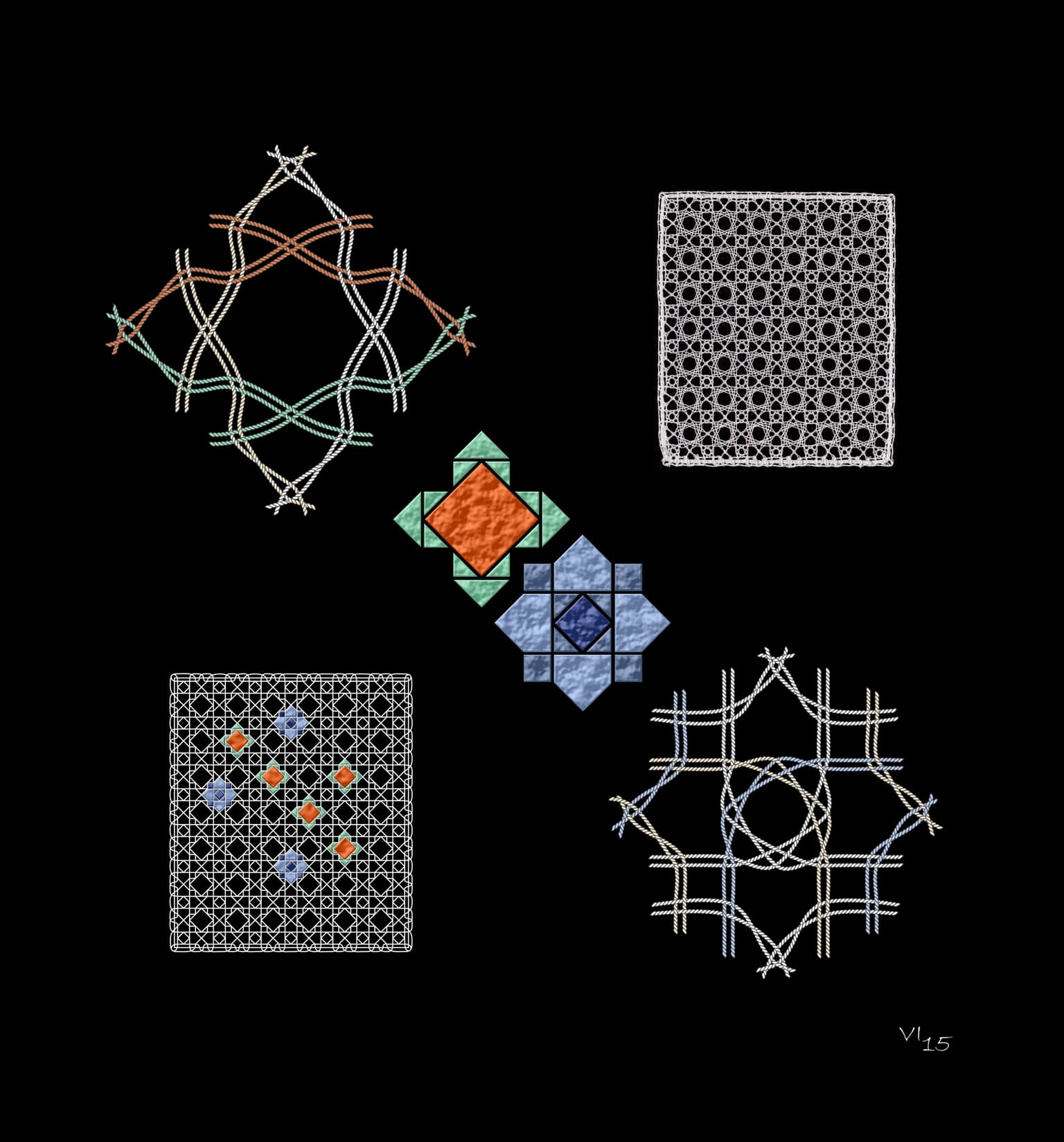Veronika Irvine
Artists
Veronika Irvine
Postdoctoral Fellow
Cheriton School of Computer Science, University of Waterloo
Waterloo, Canada
Statement
Bobbin lace is a 500 year old fibre art form in which delicate patterns are created by weaving together many threads to form an alternating braid. When I first learned to make bobbin lace I was struck by its mathematical nature. Like cellular automata, a small set of rules governs how threads can be combined but the results can be very complex. For my Ph.D. research, I have developed a mathematical model for bobbin lace using the pair (D,ζ) where D is a 2-regular directed graph embedded on a torus and ζ is a mapping from the vertices of D to a braid word. This has been a rewarding process providing me with perspective and motivation to explore new areas of math as well as a deeper understanding and insight into lace design and construction.
Artworks

Lace Orbifold *442
49 x 45 cm
Mixed media: Digital print on canvas with lace appliqué
2015